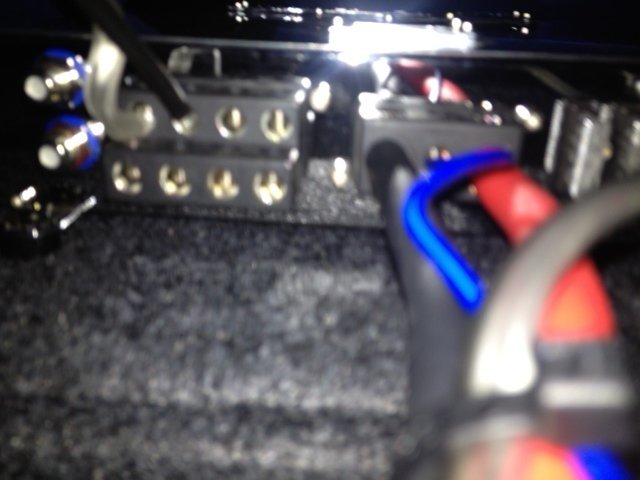Speakers, hands-down, have become indispensable for how they ensure the clarity and immersiveness of sound quality.
They are primarily characterized into two types: midbass and midrange. Although they serve different purposes, understanding the differences and nuances of each type can help you greatly in choosing the right one for your needs.
This guide examines the characteristics, advantages, and disadvantages of midbass and midrange speakers to help you choose the best fit for your needs and make the most of your investment.
Ready? Set, go!
Understanding Speaker Roles
Speakers are built to target and reproduce different parts of an audio spectrum. Here’s a low-down on what midbass and midrange speakers do and what roles they play in the reproduction process.
Midbass Speakers
Speakers that belong to the midbass category handle frequencies between 80 Hz to 300 Hz. This range covers the lower portion of the midrange and extends slightly into the bass frequencies. Midbass speakers are considered critical for reproducing vocal foundations, rhythm guitar, and other percussion instruments.
Salient features of midbass speakers
Midbass speakers come in handy to add a dash of punch and impact to the music, making it deeper and more immersive. These have:
- Larger cones and sturdy build designed to manage low frequencies and high power.
- The ability to manage the frequencies of 80 Hz to 300 Hz, enhances the impact and base of the sound.
- A lot of control for producing tight, accurate, well-defined bass at loud levels.
- Less sensitivity because they demand more power to create the low bass frequencies efficiently.
- High usage with subwoofers and midrange drivers in home and car audio for deep, balanced sound.
| Advantages | Limitations |
Enhanced low-end impact | Require large enclosures or dedicated space |
| Improved soundstage | Require more power |
| Versatility | Potential for distortion |
Midrange Speakers
These speakers can effectively handle frequencies ranging from 300 Hz to 3 kHz. Because much of the critical detail of vocals and many musical instruments falls within this range, midrange speakers produce clarity and presence in the sound. These are crucial for accurate pickup and reproduction.
Salient features of midrange speakers
Midrange speakers are instrumental in preserving the clarity and details of an audio frequency. These have:
- The capability to reproduce frequency that ranges from 300 Hz to 3 kHz, is critical for vocals and instrumental clarity.
- Small cones and lightweight materials for the midrange notes that are usually precise.
- Moderate power use for sound quality in midrange frequencies without crackling or distortions.
- Greater efficiency, which also means it can reproduce midrange frequencies with more accuracy and less power.
- Popular applications in home and car audio systems for precise sound, integrating with midbass and tweeters.
| Advantages | Limitations |
Clear vocal reproduction | Frequency overlap |
| Balanced voice coverage | Sensitivity variations |
| Detail and definition |
Midbass vs. Midrange Speakers: What’s the Difference?
Both midbass and midrange speakers cater to different improvement areas of the sound quality. However, understanding the key points of difference between them can help you pick the right one for yourself.
Refer to the table below to understand the differences through a quick view.
| Feature | Midbass Speakers | Midrange Speakers |
| Frequency Range | Typically 60 Hz to 300 Hz | Typically 300 Hz to 5 kHz |
| Purpose | Handles lower mid-frequencies, enhances bass | Handles middle frequencies, crucial for vocals and instruments |
| Size | Generally larger (6.5″ to 8″) | Generally smaller (3.5″ to 6.5″) |
| Application | Often used in car audio systems and home theaters for added bass impact | Commonly used in multi-way speaker systems for clear vocal and instrumental reproduction |
| Sound characteristics | Produces deeper, punchier bass sounds | Produces clearer, more detailed sounds |
| Placement | Usually installed indoors or rear decks in-car audio systems | Typically found in center of a speaker system for balanced sound |
| Crossover Frequency | Requires lower crossover frequency | Requires higher crossover frequency |
| Design | May have stiffer cones to handle high power levels | Typically lighter and more responsive cones |
These differences go on to explain the role and significance of each type of speaker, helping you understand where you should pump your hard-earned money and contribute to the overall improvement of the sound quality.
Parting Thoughts
In the landscape of audio technology, midbass, and midrange speakers come to the fore as one critical component, of improving the overall listening experience.
Midbass speakers work like magic while creating depth and a powerful impact of sound. Midrange speakers, on the other hand, bring clarity and detail.
Before acting on the back of impulse and buying just any speaker off the shelves, it’s essential to know the specifications, uses, merits, and demerits of all kinds of speakers.
- Crafting Captivating Headlines: Your awesome post title goes here

- The Art of Drawing Readers In: Your attractive post title goes here

- Mastering the First Impression: Your intriguing post title goes here

- How To Fix A Blown Car Speaker | 7 Easy Steps [2024]

- What Does SVC Mean In-Car Audio | Know More

- How To Fix A Car Speaker That Crackles | Steps To Follow



